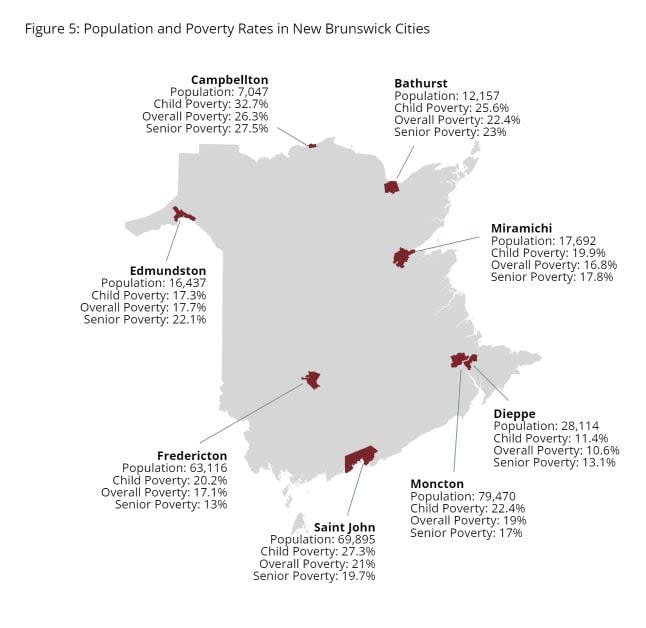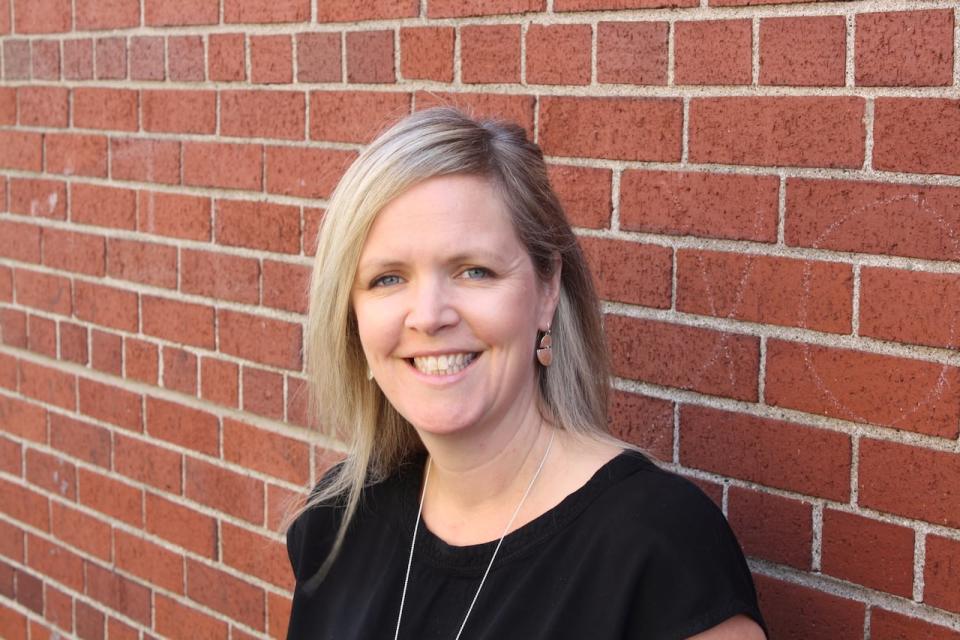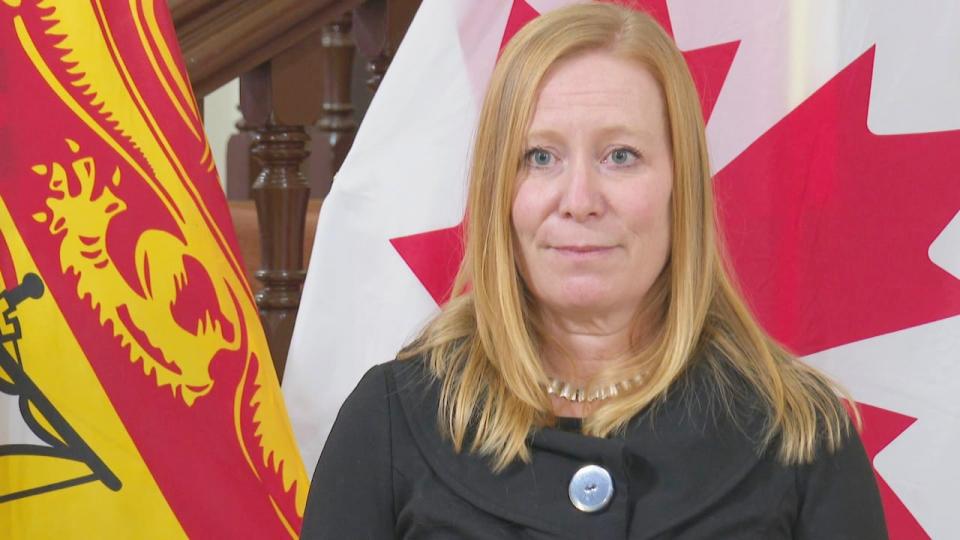More than a quarter of the children in Saint John live in poverty, study finds

The latest report on child poverty rates in Saint John shows that 27.3 per cent of kids in the city were living in poverty in 2021 — an increase of 2.1 percentage points from the previous year.
Created by the Saint John Human Development Council, the report points to the end of pandemic-related income supports and inflation contributing to the rise.
The child poverty rate for Saint John is higher than the provincial average of 18.7 per cent, which is higher than the Canadian average of 15.6 per cent.
"It's an incredibly stubborn problem," said Randy Hatfield, executive director of the council.
"It's complicated, but it is pervasive and holding a lot of folks in New Brunswick and throughout the country from living dignified and full lives," he said.

A figure from the report shows poverty rates for New Brunswick's eight cities using data from 2021. (Saint John Human Development Council 2023 Child Poverty Report Card)
Hatfield said research shows childhood poverty is especially important to address because once you live in poverty as a kid, "there's a strong likelihood that you'll cycle back into it through your lifetime."
The report shows that child poverty rates are unevenly distributed across New Brunswick's cities. Campbellton and Bathurst have rates of 32.6 per cent and 25.6 per cent, respectively. Child poverty rates in Fredericton and Moncton were 17.1 per cent and 22.4 per cent. Dieppe's rate was 11.4 per cent.
It also highlighted that poverty rates are higher for one-parent families, especially those that are female-led.
When the national Canada Emergency Response Benefit (CERB) payments began in the pandemic, Hatfield said it helped reduce child poverty for a time because it helped give an income boost to people directly.
"Really, if you want to reduce poverty, you're gonna have to either put more money in the hands of folks or you're gonna have to reduce the cost of living for folks," he said.
"I think the message is it's persistent, it's inching upwards, we're near pre-pandemic levels, and we have to start focusing our attention again on those that are struggling financially," Hatfield said.
''Generational poverty' plays a role, says expert
Alexya Heelis is the executive director of United Way in Saint John, a non-profit that supports and invests in local agencies working to address problems like childhood poverty. She said she was nor surprised by the report, but called it disheartening.
"I think we often, in Saint John, talk about the fact that one of the things we really have here is generational poverty," Heelis said.
When kids grow up in impoverished households, Heelis said, it's challenging to break that cycle.

Alexya Heelis, executive director of United Way in Saint John, says the city's child poverty issues are related to generational poverty. (Submitted by Alexya Heelis)
"There's almost this gravitational pull that sometimes can keep people in poverty because there's nobody around them that can even help in those times of need because everybody is struggling," she said.
Living in an unstable home is a "chronic stress" for impoverished families that has long-term impacts on mental health and future success in school and life, she said.
Heelis highlighted some of the non-profits that United Way supports, such as Boys and Girls Club, the Teen Resource Centre and the Learning Exchange as providing good stability to children in poverty.
Programs that target their parents are just as important, she said.
"If we can help parents be healthier and more resilient … they can be a better support system for their children, and help break that cycle in the future, right?"
Report calls for government action
The report calls on all three levels of government to act. Suggestions for the federal level include more accessible benefits and a guaranteed livable income.
Requests to the provincial government include increasing the minimum wage, as well as creating more child-care coverage and affordable housing.
"There are lots of explanations but frankly no excuses," Hatfield said.
"I think we know neuroscience. We know the impact of poverty and income insecurity on families and on young children and you know, shame on us, it's time to refocus our energies."
CBC News requested an interview with either Bill Hogan, minister of Early Childhood Development, or Jill Green, minister of Social Development. Neither were made available for an interview but an email statement from Green was provided two days later.
It stated that Green recognizes that poverty "is a serious issue in our province" and outlined the steps the province has taken to address it.

Social Development Minister Jill Green was not made available for an interview, but said in an email statement that the province has made reforms to social development programs to address poverty. (Shane Fowler/CBC News)
Green said the province has undertaken social assistance reform, including certain tax exemptions, keeping social assistance rates tied to inflation, and funding of "more than 700 projects targeting economic and social inclusion at the community level.
"Through collaboration with our community partners, like the Human Development Council, we will continue to invest in programs and initiatives to end poverty in New Brunswick," Green said.
No one from the City of Saint John or the mayor's office immediately responded to requests for comment Thursday afternoon, and city offices are closed Fridays.
Heelis said she "absolutely agrees" with the report's call-outs to the province to address housing, minimum wage increases, and accessible child care.
"We really saw it so clear during the pandemic when a lot of people had access to CERB. Our food bank usage went down. People did better. So many people, so many children were not living below the poverty line," Heelis said.


